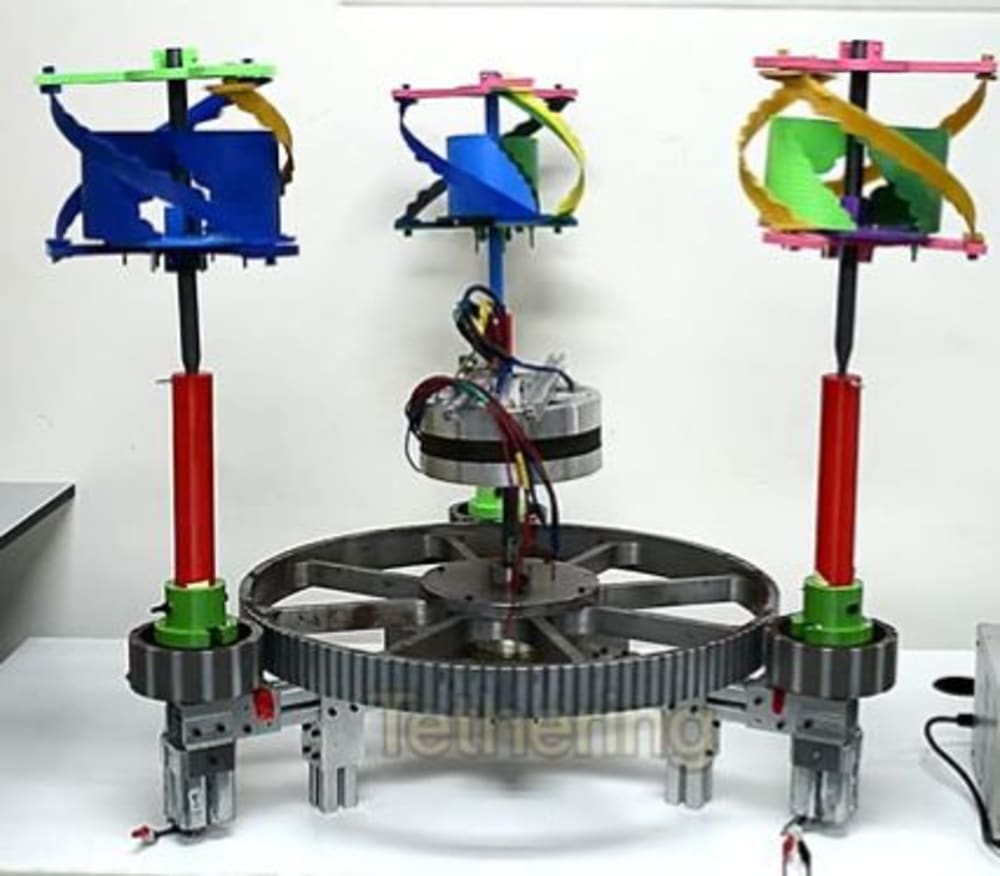
A multi-rotor wind turbine called the G-VAWT (Gyro Vertical Axis Wind Turbine) was created to support SDG Goal 7, which is concerned with developing affordable and sustainable energy sources. When it comes to controlled power output and consistency, this cutting-edge vertical turbine outperforms conventional wind turbines. It uses a continuous motion generator with magnetic gears to generate power at a constant pace. A concentric frame component supports a rotor unit with a central spinning hub in the turbine. A rotor shaft mechanically joins the hub and frame members, and flexible blades with serrated portions are attached to the frame member. A connection can be used to synchronise the rotation of many rotor components. The design of the turbine greatly minimises inertia and allows it to begin working at low wind speeds as low as 2 m/s, increasing energy efficiency. In addition, the G-VAWT has a double stator permanent magnet generator, raising the vertical turbine's power output capacity in laboratory testing to 500W per unit.
The objective of this design is to further the pursuit of accessible and affordable energy for all by offering a reliable, cost-effective solution for clean energy production. The installation of G-VAWTs (Gyro Vertical Axis Wind Turbines) presents game-changing possibilities to produce renewable energy in unusual settings. Due to its adaptability, it may be used in both on-shore and off-shore contexts, offering cost-effective solutions for locations with high traffic volumes or train track bases. The system's modularity allows for seamless integration with already-existing structures, fostering sustainability. G-VAWT effectively produces renewable energy by utilizing passive motion from high-density air flow, such as on rooftops or next to the water. The use of wind resources and the advancement of sustainability could result in a new energy infrastructure.
This technology approach has a lot of benefits, including replication and scalability. Regardless of the wind conditions, the design can be used in numerous locations to provide continuous and regulated motion. The system's modular design also makes it simple to replicate and integrate into other situations. The entire power generation capacity can be increased when more turbines are added to adapt to changing energy demands. By combining these key inventiveness and characteristics, this technology demonstrates its potential for widespread implementation and scalability in the renewable energy sector. Adoption of the system is relatively a breakthrough particular for countries with high speed rail and highway lanes.
Through a number of important aspects, this wind turbine technology represents innovation and originality. Use of smaller turbines and magnetic propulsion, a brand-new and creative technique that lowers inertia and enhances overall performance. Its capability of independent omnidirectional rotation exemplifies a decentralised control strategy that reduces the power needed for actuation. G-VAWT offer a novel and creative method for producing renewable energy by fusing these cutting-edge components. Its lower size and quick start-up in light winds demonstrate a distinct viewpoint on energy collection optimisation. The capacity to independently rotate in any direction further exemplifies a novel approach to decentralised control, which minimises energy requirements while maximising performance.
-
Awards
-
 2023 Top 100 Entries
2023 Top 100 Entries
Like this entry?
-
About the Entrant
- Name:Chockalingam Aravind Vaithilingam
- Type of entry:individual
- Software used for this entry:JMAG, SolidWorks, Ansys

